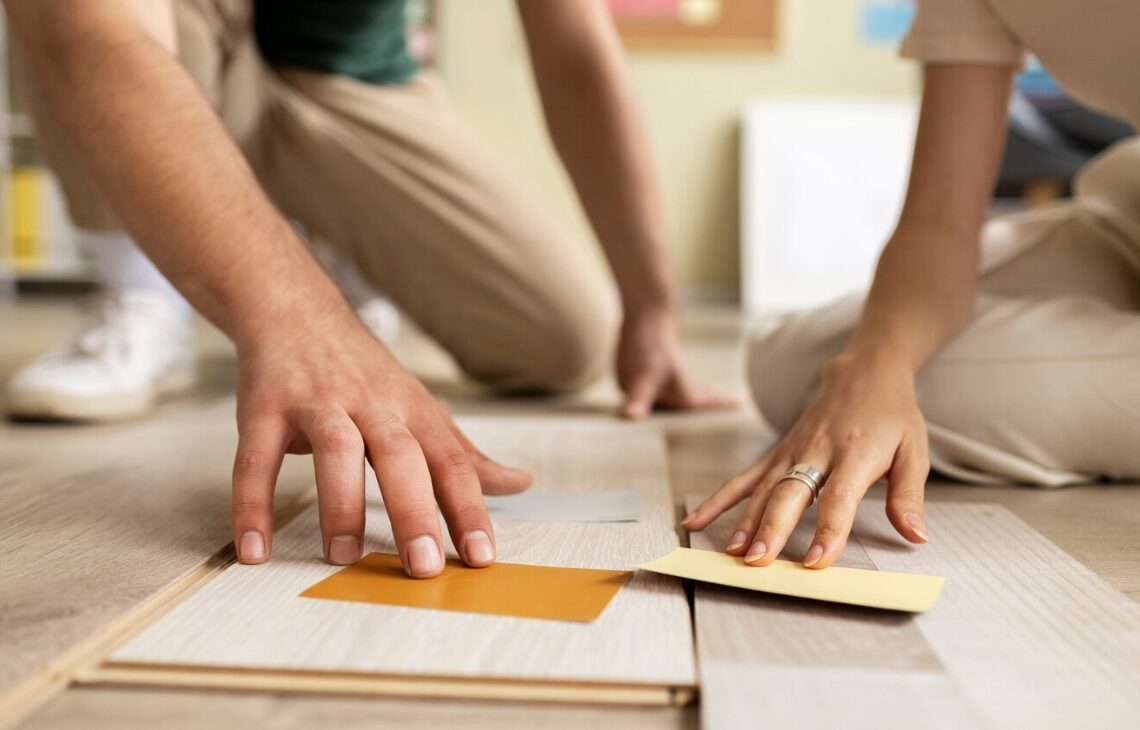Vinyl flooring: Benefits, Installation, and Maintenance Tips
Introduction to Vinyl Flooring
Affordability, durability, and adaptability of vinyl flooring have helped it to become rather popular Made of synthetic materials—mostly PVC (polyvinyl chloride), this flooring choice is moisture and wear resistant. Available in several forms, it provides a soft surface underfoot and can resemble wood, stone, or tile. Its useful advantages make it rather common in homes, businesses, and offices.
Both appearance and utility depend on selecting appropriate flooring. Vinyl flooring lets homeowners have a beautiful yet low-maintenance surface. It is also available in several forms, including tiles, planks, and sheets, therefore enabling a tailored appearance.
You May Also Like: Maine Cabin Masters Italy: Exploring Rustic Charm Abroad
Types of Vinyl Flooring
Sheet Vinyl Flooring
Cut to match an area, sheet vinyl is a continuous roll of flooring material. Its minimum seams and water-resistant surface make it perfect for bathrooms and kitchens. Furthermore, compared to other flooring kinds, it is simple to install and calls less care.
Vinyl Plank Flooring
Vinyl plank flooring is designed to replicate the look of hardwood flooring. It comes in individual planks that are assembled using a click-lock or adhesive method. Many homeowners prefer this option due to its realistic wood appearance and ability to withstand high foot traffic.
Vinyl Tile Flooring
Though they feel softer and warmer, vinyl tiles resemble ceramic or stone tiles. Their many colors, patterns, and textures let them be a fashionable addition to any interior. Maintenance is easy since individual replacements of damaged tiles are possible.
Advantages of Vinyl Flooring
Affordability
Cost-effectiveness of vinyl flooring is one of its main benefits. Although it’s less expensive than hardwood, tile, or stone, it still looks elegantly.
Durability and Longevity
Daily wear and high foot traffic are expected of vinyl flooring. Its scratch-resistant surface helps it to retain in good shape for many years with little maintenance.
Water Resistance
Vinyl flooring unlike hardwood flooring does not absorb moisture. For places like kitchens, baths, and basements where spills are likely, this makes it a great option.
Easy Installation
Many vinyl flooring choices have an easy installation technique. Peel-and–stick, click-lock, and glue-down techniques let homeowners select one that fits their demand.
Low Maintenance
Maintaining cleanliness on vinyl flooring calls very minimal work. Its durability and gloss are maintained by regular sweeping and sporadic cleaning alone.
How to Install Vinyl Flooring
Preparation
The surface needs to be clean, dry, level before to installation. Any flaws in the subfloor should be fixed to guarantee equal flooring.
Choosing an Installation Method
There are different installation methods for vinyl flooring:
- Peel-and-stick: An straightforward DIY installation is made possible with a self-adhesive backing.
- Click-lock: A floating floor results from interlocking planks or tiles without glue.
- Glue-down: The flooring is secured with adhesive, therefore guaranteeing a level surface.
Installation Steps
- Measure the Area: Accurate measurements guide the flooring required’s quantity.
- Cut the Flooring: Cut the vinyl to exactly fit the area with a utility knife.
- Lay the Flooring: Plans provide for several types of positioning depending on the type—planks, tiles, or sheets.
- Secure the Edges: Strongly pressing down guarantees correct adherence and removes air bubbles.
Maintenance and Care Tips
Daily Cleaning Routine
Regular sweeping or vacuuming helps vinyl flooring stay in good shape. Maintaining cleanliness is crucial since over time dirt and trash could cause scratches.
Deep Cleaning Methods
A damp mop with a light cleaning solution will help with a deeper clean. One should avoid abrasive equipment or strong solvents since they could ruin the surface.
Preventing Damage
- Use Felt Pads: Under furniture, felt pads stop scuffs.
- Avoid Excess Water: In some vinyl flooring, extended water exposure can degrade the glue.
- Trim Pet Nails: Regular clipping is advised since sharp nails might mark the flooring.
Comparing Vinyl Flooring to Other Flooring Options
Vinyl vs. Hardwood
Though it looks classic, hardwood flooring needs a lot of maintenance. On the other hand, vinyl flooring offers a comparable look at less expense and more durability.
Vinyl vs. Laminate
Though laminate flooring is less expensive, it is not as water-resistant as vinyl. For places prone to dampness, vinyl is thus the recommended choice.
Vinyl vs. Tile
While vinyl flooring gives a softer and warmer feel and is faster to install, ceramic and stone tiles are durable but can be cold and rough underfoot.
Eco-Friendly Aspects of Vinyl Flooring
Many of the contemporary vinyl flooring choices are made with environmental consideration. Certain items satisfy environmental certifications and some companies employ recycled materials. Furthermore, vinyl flooring minimizes waste since it lasts for many years and less frequent replacements are needed.
Conclusion
Appropriate for many different environments, vinyl flooring is a flexible, reasonably priced, and fashionable flooring alternative. For homes, its simplicity of upkeep, water resistance, and strength make it a sensible choice. Whether you choose sheet, plank, or tile vinyl, good installation and maintenance guarantee lifetime beauty. Anyone can enjoy vinyl flooring in their house by weighing its benefits and installation techniques.


0 Comment